
There are a variety of smart solutions available, capable of optimizing your solar EV charging system in different ways: from scheduling timed charges to controlling which portion of your solar panel electricity is sent to which appliance in the home.
Dedicated smart charging features enhance only the solar connectivity of your EV home charging station, whilst home energy management system (HEMS) apply the same optimization across all household appliances.
Additionally, smart charging software found in compatible charging stations gives you greater control over the charging times and energy-source consumption of your EV, further enabling you to optimize your EV’s connection to solar electricity.
To avoid confusion, maybe don’t say “smart home energy management” but just home energy management”
Table of contents
The global movement toward more sustainable home charging
Home charging is far and away the most popular way to recharge EVs according to our international survey of EV drivers. In the US alone, 80% of all EV charging takes place at home, using a home charging station plugged into the household electricity circuit.
As electricity prices continue to rise, and fossil fuel supply remains volatile, we are witnessing a global movement toward more sustainable home charging energy sources – primarily, solar power.
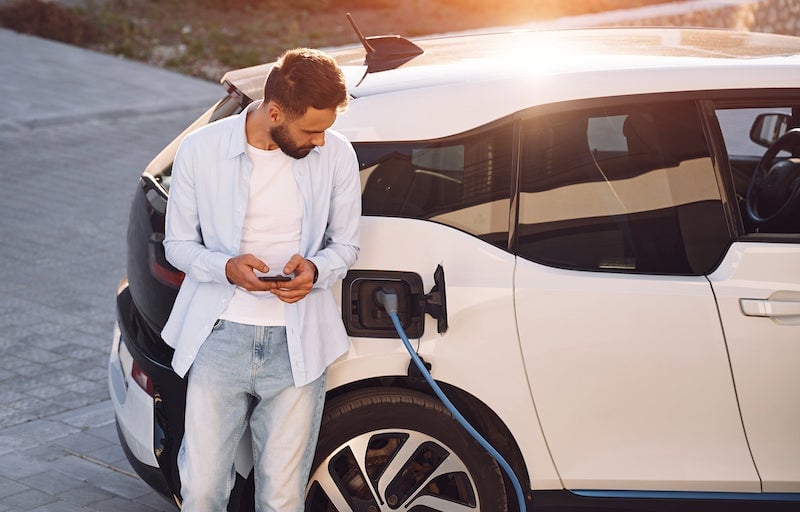
Charging an EV using household solar panels provides EV drivers with a free, carbon-neutral, and sustainable supply of electricity.
Yet, with unpredictable weather patterns affecting the potential output of panels, there is a tangential need for smart charging solutions that can help optimize the use of electricity produced by your PV array.
In this article, we explore smart charging solutions in the context of a solar EV system, before diving into the range of technologies available today and how they can improve your household electricity consumption and EV-charging experience.
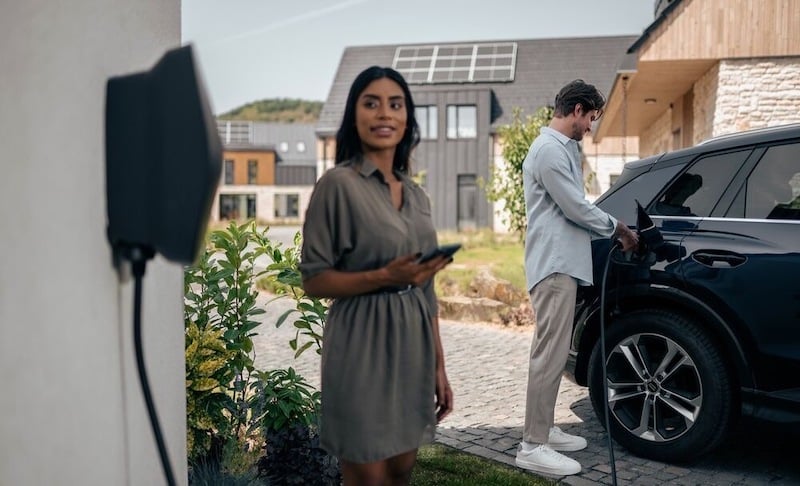
What is smart charging?
‘Smart charging’ is an umbrella term for a range of emerging technologies. These technologies rely on Bluetooth and internet connectivity to communicate between your solar panels, the grid, your household appliances, and your EV home charging port. In doing so, they optimize the efficiency of your solar EV charging setup.
You can think of ‘smart charging’ as being similar to a ‘smartphone’ or ‘smart home.’ Neither a smartphone nor a smart home does just one ‘smart’ thing. Instead, the ‘smart’ prefix refers to a whole host of software applications capable of enhancing the capabilities of your device(s) and their convenience to you, the end user. This is the same for ‘smart charging’ solutions for solar EV charging.
In the context of solar EV charging, ‘smart charging’ tends to refer to two distinct energy optimization technologies: a dedicated smart charging feature or a home energy management systems (HEMS).

What is a dedicated solar smart charging feature?
A dedicated smart charging solar feature is a piece of hardware or software (depending on your charging station’s capabilities) that focuses exclusively on optimizing your EV charging session. These features communicate directly between your EV charger and household electricity supply, which includes your solar panels. Similar technologies exist for other smart devices, in which context they are known by the term ‘single appliance optimization’.
In one of our REVOLUTION podcast episodes, Jelle van Doornik, Product Manager at EVBox, explained the use case for these type of solutions.
How dedicated smart solar charging features work
Dedicated smart charging features link your EV home charger to your solar panels, via your home’s electrical circuit. The job of a dedicated smart charging feature is to measure the output of solar electricity from your panels, as well as the availability of green energy in the grid, against the energy consumption needs of your EV charging station.
As a ‘smart’ technology, dedicated features can be customized quite extensively, allowing you to dictate how and when you want to recharge your EV.
If, for example, you want to recharge your EV using only solar power, then a dedicated smart charging feature can be set to control the current to your charging station so that your car only charges when solar electricity is available – i.e., during peak sun hours when your panels are producing at their maximum potential.
We’ll explore a greater range of smart charging possibilities a little later in the article.

What is a home energy management system (HEMS)?
Home energy management systems, or HEMS, take the possibilities of smart charging a step further. In addition to optimizing your EV charging station’s electricity usage, a HEMS integration also optimizes electricity supply for your other household appliances, such as your washing machine, air conditioner, fridge freezer, and television.
How a HEMS integration works
A HEMS integration is a centralized system connected to all of your major appliances. Like a dedicated smart charging feature, HEMS also optimizes the supply of electricity but does so in communication with multiple other devices including your EV charger. By monitoring the available solar electricity – both on the grid and that produced by your rooftop panels – HEMS integrations apply smart algorithms to decide where best to send this solar electricity.
In doing so, a HEMS integration benefits your household energy consumption in various ways:
- It ensures appliances only receive the energy they require when they require it, thus limiting wastage.
- It minimizes the risk of overloading your electrical circuit by starting and stopping the consumption of electricity by appliances, like your solar EV charger, when the load is peaking.
- It matches solar output to the electrical consumption of appliances, that is good for two major reasons:
- 1) It reduces your carbon footprint by feeding energy-hungry appliances renewable electricity
- 2) It reduces your monthly utility, or electricity, bill by using available solar power in the most cost-effective way
In that same REVOLUTION podcast episode, Jelle van Doornik, Product Manager at EVBox, also dove deeper into EV charging and the integration with HEMS.
How smart charging stations can further optimize your solar EV charging setup
Without any smart charging features such as those described above, solar panels work for EV charging by converting sunlight into electricity and feeding this electricity into the home’s electrical circuit. Any electricity which is not then consumed by your household appliances is fed, eventually, to your EV charging port. Any surplus solar energy not consumed during this process is then fed back into the grid for use elsewhere, by other households.
The major benefit of smart charging for solar EV systems is that the solutions give you greater control over where, when, and what portion of your solar-generated electricity is spent. The appliance optimizers we described above help reduce energy bills, your carbon footprint, and energy wastage.
Now, we’ll discuss smart charging stations, i.e., charging stations that have in-built smart charging software.
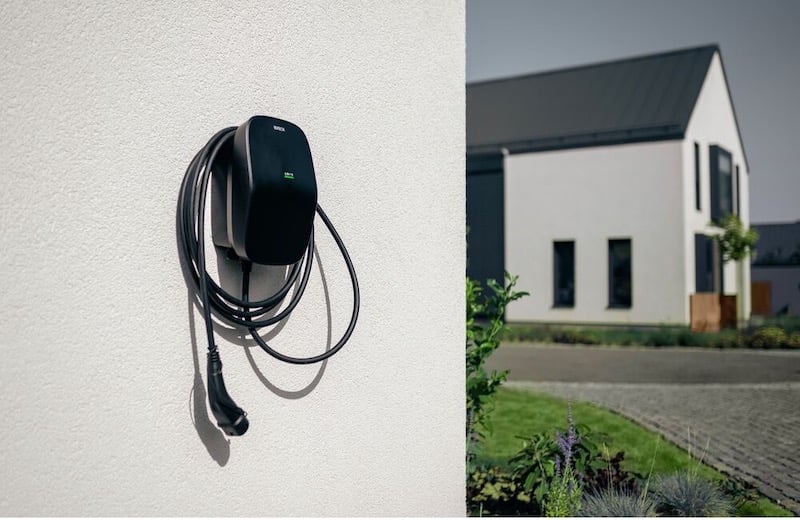
Solar optimization settings
Depending on the software installed in your smart charging station, a range of different optimization settings will be available to you. These work thanks to Bluetooth and/or internet connectivity, which allows your smart charging station to communicate with your home’s electrical circuit. Below, we’ll take a look at some of the key smart charging features currently available in the best home charging stations.
1) Exclusive solar charging
Environmental consciousness is of great concern to the modern EV driver. It makes perfect sense, therefore, that you should want to recharge your EV using solar power only. You can set a smart charging station to only charge your vehicle when the electricity being delivered to it comes straight from your solar panels.
2) Selective solar charging
Of course, depending on your solar setup, it may not be possible to rely entirely on solar power to recharge your EV, or at least not practical to do so throughout the year. Smart charging stations can, alternatively, feed solar electricity to your EV when your panels are producing it, but also top-up this supply with grid electricity when solar output drops. This option gives you a balance of greater convenience with cost-effectiveness and lower carbon emissions.
3) Charging without optimization
This means you take whatever is available to charge as fast as you can. Whether it's self-generated solar, solar topped up with electricity from the grid, or fully relying on the grid While this setting is not optimized for using renewable energy at all, it prioritizes charging with full power when you need it most.

Timed charging and scheduling
Smart charging home EV stations can be controlled remotely, usually with a smartphone app affording you a range of additional controls, including timed and scheduled charging. Control over the time of day your EV recharges is another useful feature of smart charging stations.
For example, you can schedule your EV charger to begin charging only during peak sunlight hours, when your panels are producing the most electricity, thus replenishing your battery in a free and carbon-neutral way. Timed charging ensures that surplus solar electricity isn’t lost in being fed back to the grid; instead, the surplus goes to recharging your electric vehicle.

Alternatively, you could set your smart charging station to turn on overnight, recharging your EV when electricity from the grid is cheapest, and/or using a backup source of solar electricity stored in a home battery system.
Over-the-Air updates
We’ve discussed a few of the key capacities of smart home charge stations to optimize the electricity consumption from your solar panels. One of the most exciting elements of a smart home charger, however, is its ability to learn – to grow smarter – over time.
Over-the-air (OTA) updates are software updates that can be loaded onto your smart charger via Bluetooth or internet connectivity; just like your smartphone receives updates to its operating system from time to time. And just like smartphone upgrades, OTA updates for smart EV chargers will, over time, improve their efficiency and broaden their range of functionality. Who knows what new smart charging features could be launched over the next few years?
What is EEBUS?
You might not have heard the term ‘EEBUS’ before, but it’s worth quickly mentioning. EEBUS is a framework, kind of like a specialized language, that standardizes the way in which energy management systems, smart devices, and other electrical appliances communicate.
It’s relevant here because EEBUS will likely become the standard protocol by which smart features interact. Thus, when shopping for smart charging solutions for your solar EV system, you should be keeping a close eye out for EEBUS-capable devices.
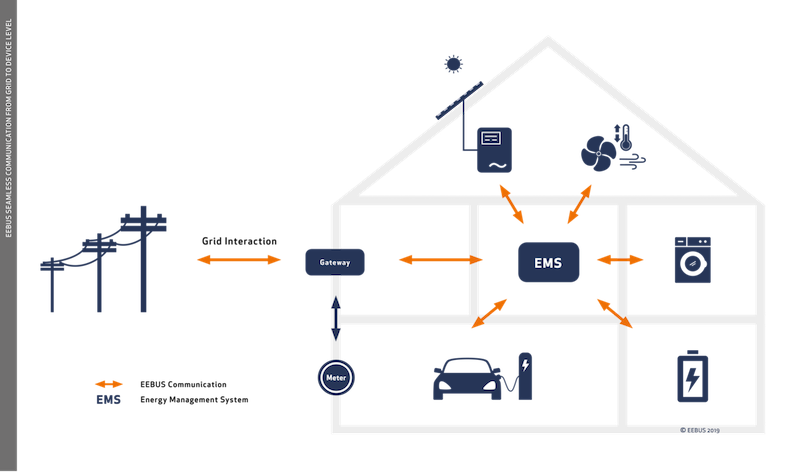
Conclusion: What’s the best smart solar charging solution?
In this article on smart EV charging and solar power, we’ve described a range of different smart charging solutions, from dedicated smart charging features and home energy management systems (HEMS) to the smart software found in your home charging station. But the question remains: Which smart solar charging solution is best for you?
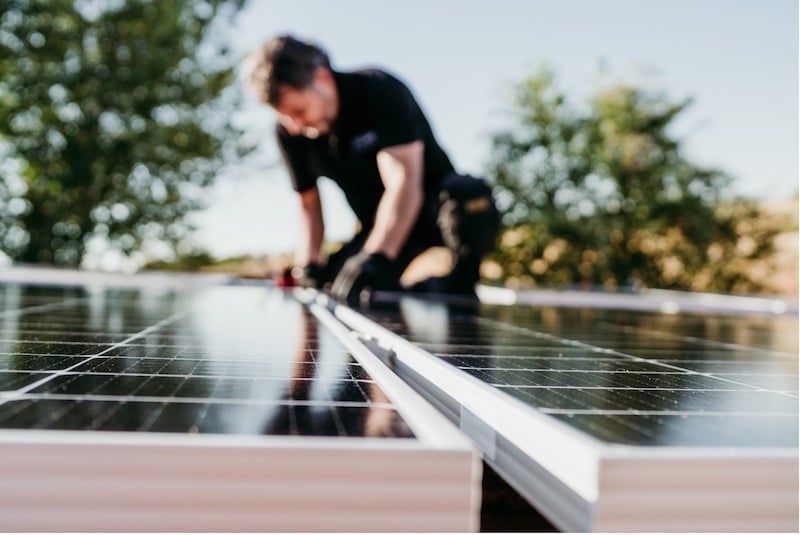
The best solution, as always, depends on your circumstances.
If you only wish to optimize the solar connectivity of your home EV charger, then a dedicated smart charging feature (AKA, a single-appliance optimization tool) may be preferable.
On the other hand, if you run a number of energy-intensive appliances at home including your charger, then HEMS integration is likely to benefit your solar EV charging setup more.
Typically, a combination of smart charging stations and an energy management system (single or multiple appliances) will serve your solar EV charging needs most comprehensively. Just be sure to look out for EEBUS and OTA-update compatibility when shopping around.
To learn more about charging your EV with solar power, as well as how to optimize a household solar charging system, browse the EVBox blog.
Related articles

Smart Charging for Solar EV Systems: What is possible today?
There are a variety of smart solutions available, capable of optimizing your solar EV charging system in different...

Can solar EV charging save you money?
Charging your EV using household solar panels can indeed save you money on your utility bills. How much money solar EV...
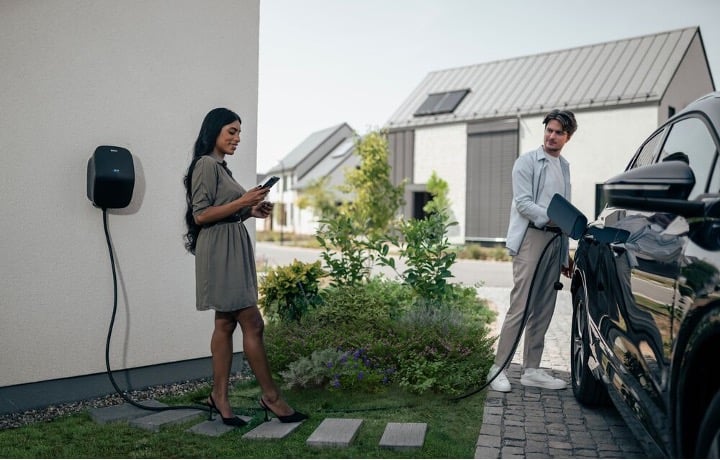
How to optimize your solar set-up for charging electric cars at home
There are several ways EV drivers can optimize a homegrown solar system to ensure their EV recharging needs are met....